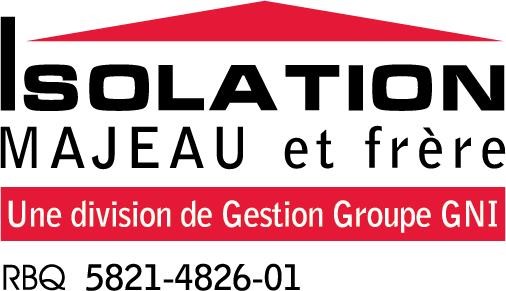The attic, unlike what you see in the movies, is not a room filled with period treasures worth a small
fortune. Rather, it is a place where many air leaks can end up costing you a small fortune in electricity.
Poor attic insulation can account for up to 25% heat loss. Yet attic insulation is a simple, quick, and cost-
effective solution to reducing heat loss from the home.
9 GOOD REASONS TO CHECK ATTIC HEAT LOSS
There Are Many Air Leaks.
Wherever there are holes, there are holes in your electricity budget. For every cubic foot of air that escapes outside,
another cubic foot of outside air seeps into the base of the house, creating uncomfortable drafts. Air escapes through,
among other things, cable holes, plumbing pipes or vents, attic hatches and recessed light fixtures. Did you know that
99% of air leaks come from these places
Ducts Go Through the Attic
If you have an air exchanger or heat pump pipe running through your attic, you need to make sure that it’s properly
sealed and insulated. Otherwise, a leaky pipe brings moisture and energy loss. And moisture creates mildew. In addition,
the warm air that’s brought into the attic warms the roof and can melt the snow in winter. Result: it takes more energy to
heat your home.
The Chimney Liner Is Poorly Insulated.
The chimney is associated with heat, but it is also an element of heat loss.
If you have an old, uninsulated brick chimney with a metal liner which runs through the attic, you could be in trouble.
Indeed, the heat from the fireplace warms the attic, melts the snow and creates icicles. If you are not using your chimney
and it is not condemned, that is another problem. Your chimney draws the heat from the house outside.
Heat Loss Through Attic Access Hatches.
Accessing the attic is convenient, but hatches are often affected by air leaks. In fact, it is a major heat loss factor. This is
to be expected as it’s one of the largest holes in the top of a house, making it a perfect gap for insulation. Unfortunately,
old wooden hatches insulated with mineral wool let air through. Unlike prefabricated access hatches which are sealed
with rubber and insulated with an R-41 factor that complies with the Building Code.
Your Recessed Lights Are Not Sealed.
Here’s a bright idea to reduce heat loss: insulate your light fixtures. Recessed fixtures are often installed without the holes
and joints being sealed. The problem is that the building envelope is pierced and moisture can seep into the attic. Hence
the importance of having a vapour barrier. Another problem is that air escapes freely around the bulbs, through the
housing, warming the attic. If your bulb is not an LED type, the longer it is lit and warms up, the more hot air leaks
increase.

Bathroom Fans Are Vented to the Attic.
When you take a shower or a bath, do you happen to draw in the mist that formed on the mirror? It’s great fun, but if all
that moisture is directed into the attic, it can cause a lot of problems. Damp air from the bathroom sent into the attic brings
in humidity. And when there’s humidity, there’s mildew. Nothing good for your home. To avoid these problems, make sure
the duct is properly sealed and insulated, and that the outlet is outside the house. Not in the attic.
**PHOTO A bathroom fan without a vapour barrier brings moisture into the attic, which can cause mildew. **
Ice Is Building Up on the Roof.
Ice on the edge of the roof of your house is a sign of poor insulation or poor attic ventilation. Here’s what happens. The
attic temperature rises above freezing point, melting the snow. Then the water freezes at the height of the gutter, forming
ice cubes. Trapped water can then seep into exterior walls and sooner or later into your home. But there are ways to
prevent ice damage.
Heat Radiates From Your Roof in the Summer.
The summer sun is often our ally, but if your attic is poorly insulated, it can also increase your electricity bill. In fact, the
power of the sun’s rays can heat the shingles to a temperature of over 60 ̊C. This intense heat radiates into the attic and
throughout the house. What warms up the air you pay to cool down. Your air conditioner is running at full capacity and
ends up costing you a lot.
Lack of Insulation in Your Home Is a Source of Heat Loss.
Houses from the 70s-80s are expensive in terms of electricity because they are insulated with mineral wool. The problem
with this insulation is that it leaves a lot of badly jointed gaps between the gaps underneath the roof. By adding 6 to 8
inches of cellulose over the original insulation, it’s possible to easily eliminate thermal bridges. Cellulose made from
shredded paper covers thermal bridges and reduces heating costs by 20 to 30%.
Isolation Majeau has been specializing in basement insulation for more than 25 years
Visit the following pages to learn more about the services covered in this article:
-Roof and attic insulation
-Urethane Insulation: Type 2 Sprayed Polyurethane
**PHOTO Adding blown cellulose over your original insulation is a quick and easy way to increase the energy efficiency (R-
value) of your attic. **
In conclusion, if you own a house with a sloped roof, attic insulation is an effective solution to reduce heat loss. This is the
first room you should insulate because we don’t need to knock down a wall. Adding cellulose to your attic is done in less
than two hours. There is no mess and the savings on your electricity bill are immediate.
This article was originally published on July 12, 2019 by Jocelyn St-Pierre








